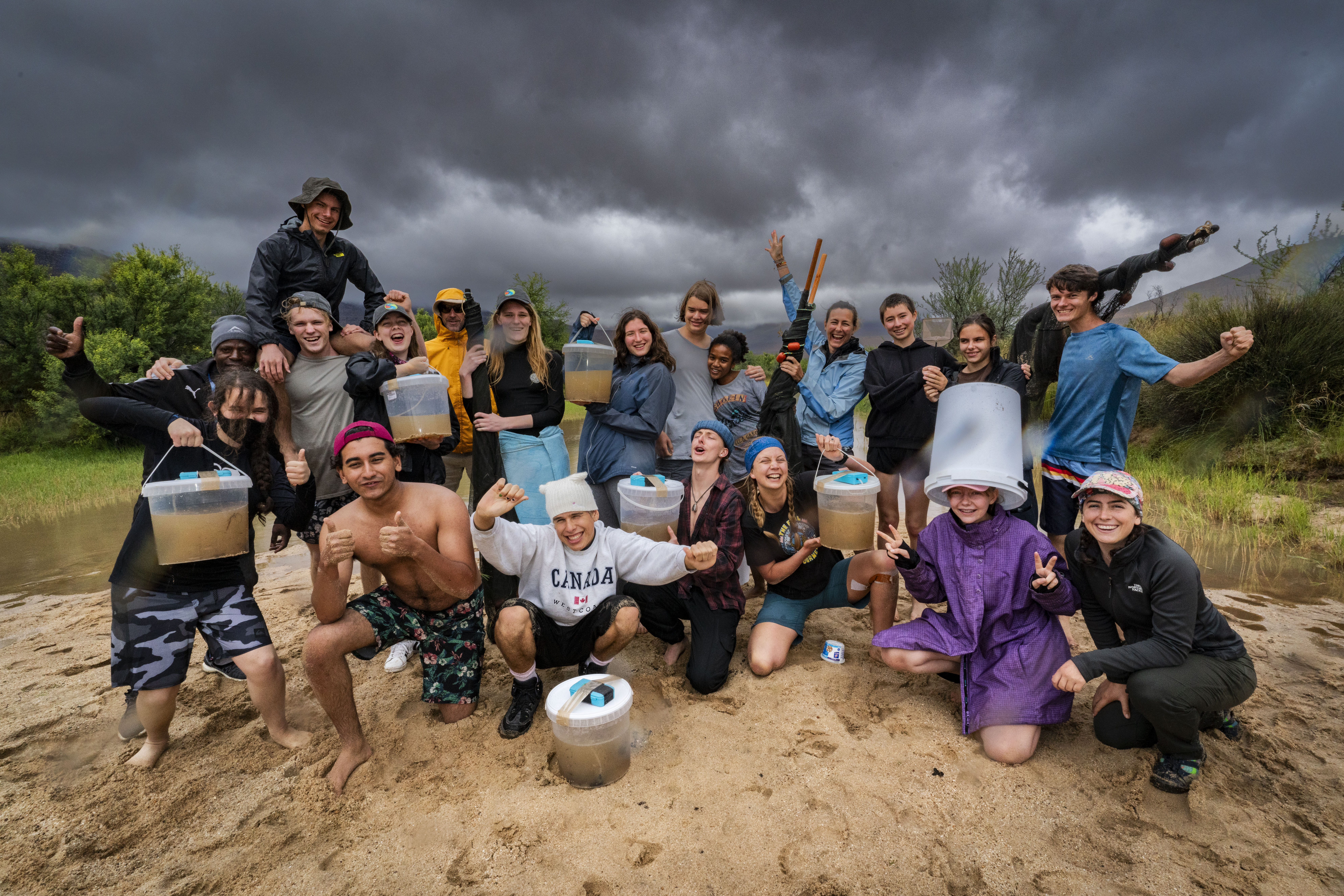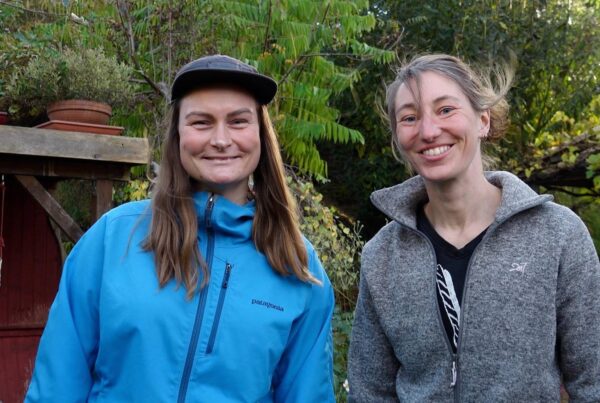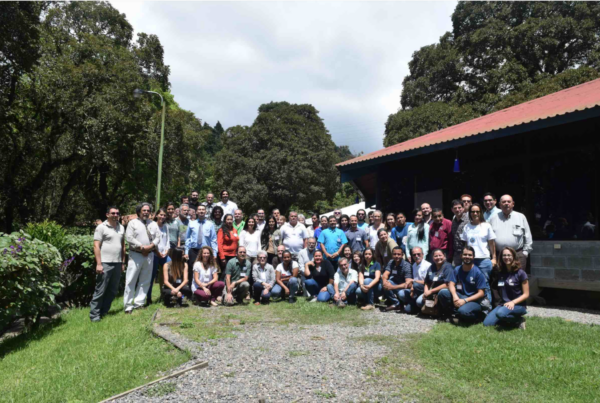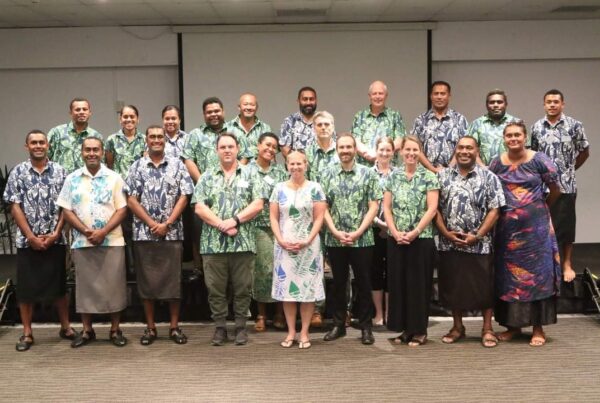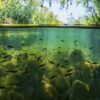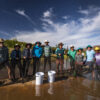The Freshwater Research Centre (FRC) is on a quest to save South Africa’s most threatened migratory freshwater fish, the Clanwilliam sandfish. The Clanwilliam sandfish, listed as Endangered Species on the IUCN Red List, are at risk of going extinct within our lifetime due to invasive predators and excessive water abstraction. In response, the FRC has initiated Africa’s largest freshwater fish rescue effort! We spoke with Dr. Jeremy Shelton, a freshwater conservation biologist at the Freshwater Research Centre, to learn about the measures they are undertaking to protect the Clanwilliam sandfish and boost its population in its natural habitat.
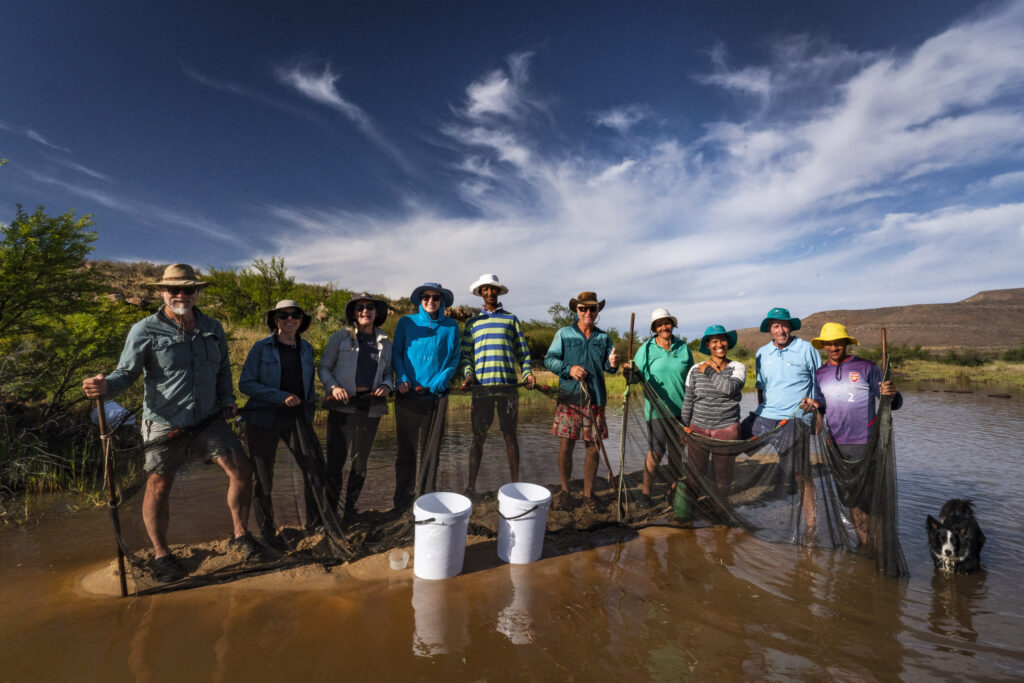
Scientists, community members and students band together to rescue young sandfish in 2021 (© Jeremy Shelton)
What are the biggest challenges facing freshwater ecosystems in South Africa? How is the Freshwater Research Centre (FRC) helping to address them?
[Jeremy] South Africa’s freshwater systems are under building pressure from a potent cocktail of threats. This includes human impacts on water quality and quantity, habitat destruction, climate change and invasive species. Freshwater fishes are South Africa’s most threatened species group and the Fynbos region in the South-West corner of the country is a conservation hotspot for freshwater fish. At the Freshwater Research Centre, we work collaboratively with various organisations, individuals and communities to save threatened freshwater fish species from extinction by restoring river habitats through an initiative called Fynbos Fish Revival!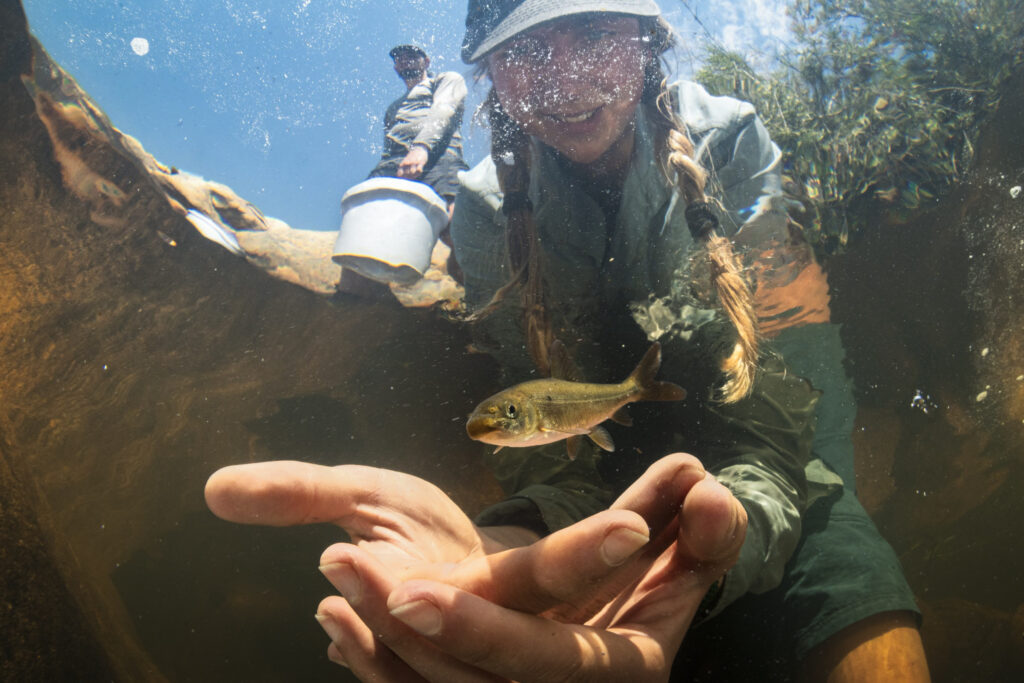
A sanctuary-reared sandfish is released back into the wild (© Jeremy Shelton)
What makes the Clanwilliam sandfish so important in South Africa’s freshwater ecosystems?
[Jeremy] Historically, Clanwilliam sandfish were widespread across the Olifants-Doring River basin in the South-West corner of the country, undertaking mass spawning migrations from river mainstems up into spawning tributaries. They use their peculiar down-turned mouths to graze algae and detritus, keeping river food webs clean and balanced. They also were an important food source for indigenous birds, otters and people of the area. Invasive fishes like black bass from North America and other human-linked impacts pushed the sandfish out of most of their native range, and today only a few small subpopulations persist in far-flung corners of the catchment.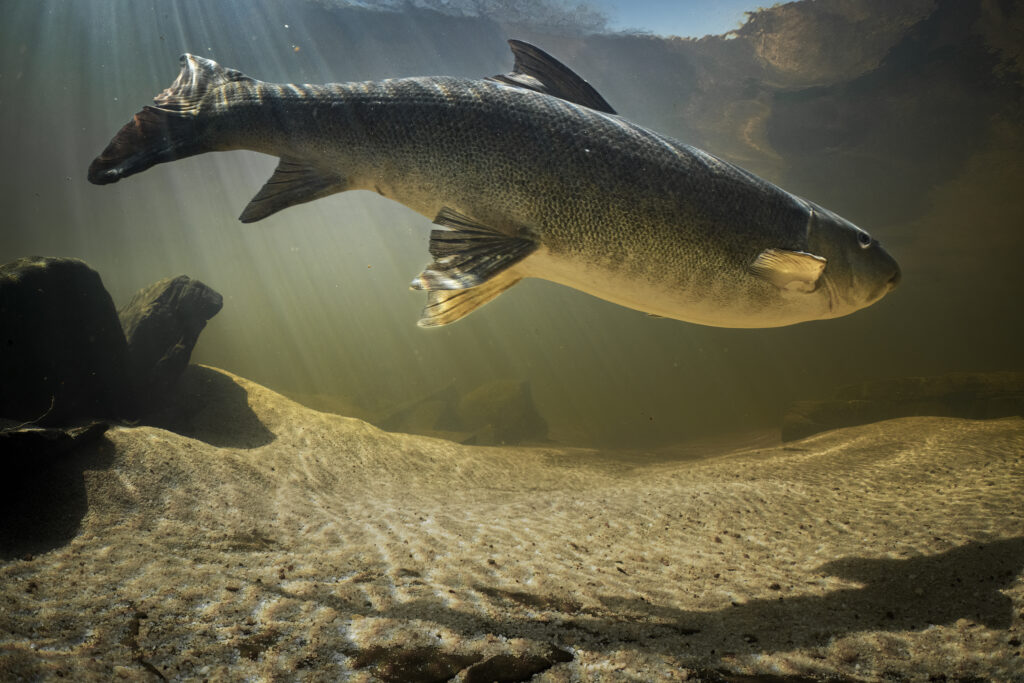
An adult clanwilliam sandfish (© Jeremy Shelton)
What are the main threats that the Clanwilliam sandfish face, especially concerning its migration routes? How is the Freshwater Research Centre (FRC) working to protect this species?
[Jeremy] Flow in the Doring River and its tributaries is seasonal. In summer, the Doring River mainstem stops flowing, and sandfish survive the hot, dry summer months by seeking refuge in a handful of deep, murky pools that hold water throughout the year. They wait patiently in the depths until the winter rains bring flow and trigger their annual spawning migration. Sandfish migrate up tributaries like the Biedouw River to reach their preferred spawning areas, and they were once so plentiful that they turned the Biedouw into vast waves of gold as they moved en masse upstream to spawn. But today their numbers have dropped so low that they may well go extinct within our lifetime. In 2021 and 2022, scientists estimated that the spawning migration in the Biedouw River was less than 200 adult fish.The spawning sandfish lay tens of thousands of eggs, but few to none survive and recruit to adulthood. The Biedouw and other sandfish spawning tributaries have become infested with North American predatory fish species like black bass and bluegill sunfish, which were introduced for angling a century ago. Bass and bluegill prey heavily on juvenile sandfish and, to make matters worse, excessive water abstraction in the catchment causes tributaries like the Biedouw (that once held water year-round) to dry up completely in summer. Any young sandfish that survive predation run out of water and perish.
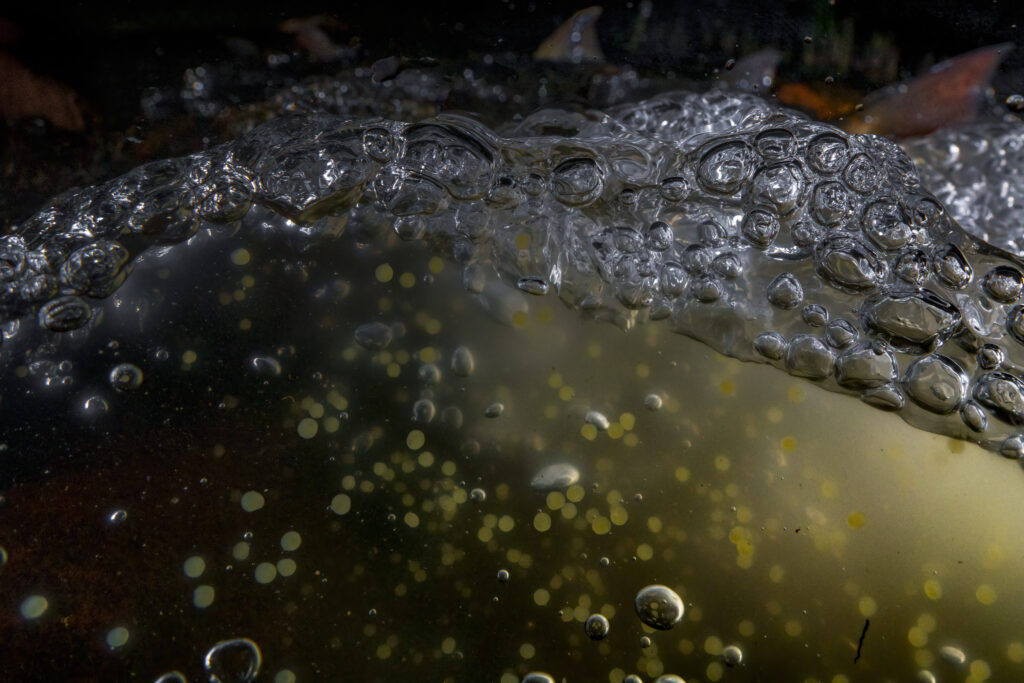
The moment of fertilisation when sandfish milt comes into contact with eggs(© Jeremy Shelton)
[Jeremy] This lack of recruitment and ageing adult sandfish population is a recipe for extinction, unless something is done. And so, the Saving Sandfish project was born – a pioneering emergency conservation effort to save the sandfish from extinction. Local communities are trained and employed to rescue the young fish before they perish and relocate them to the safety of sandfish sanctuaries – farm dams (reservoirs) cleared of alien fish with the help of supportive farmers. After a year or more, the young fish are collected and released back into the wild, by which time they have grown large enough to avoid being eaten by bass and bluegill.To measure the success of this ‘head-start conservation intervention’, scientists at the FRC tag the sandfish with tiny PIT (Passive Integrated Transponder) tags prior to release. An underwater antenna installed near the mouth of the Biedouw River, detects any tagged fish returning to the river to spawn via a unique bar code ID located within the tag. To date, over 35,000 sandfish have been rescued, over 2,000 tagged and released and over 200 of those tagged fish have returned to the Biedouw to spawn, more than doubling the spawning population of sandfish in the Biedouw River – a big step toward preventing their extinction in the wild! The success of this conservation work is documented in a recent peer-reviewed scientific paper published in the Journal Conservation Science and Practice led by PhD student Cecilia Cerrilla. The next phase of the project is to restore the upper Biedouw River by removing invasive species to secure the long-term survival of the sandfish and other endemic freshwater species.
Through the Fynbos Fish Revival, we are currently working on three concurrent projects focused on conserving threatened freshwater fish through restoring river ecosystems across South Africa’s Western Cape Province.
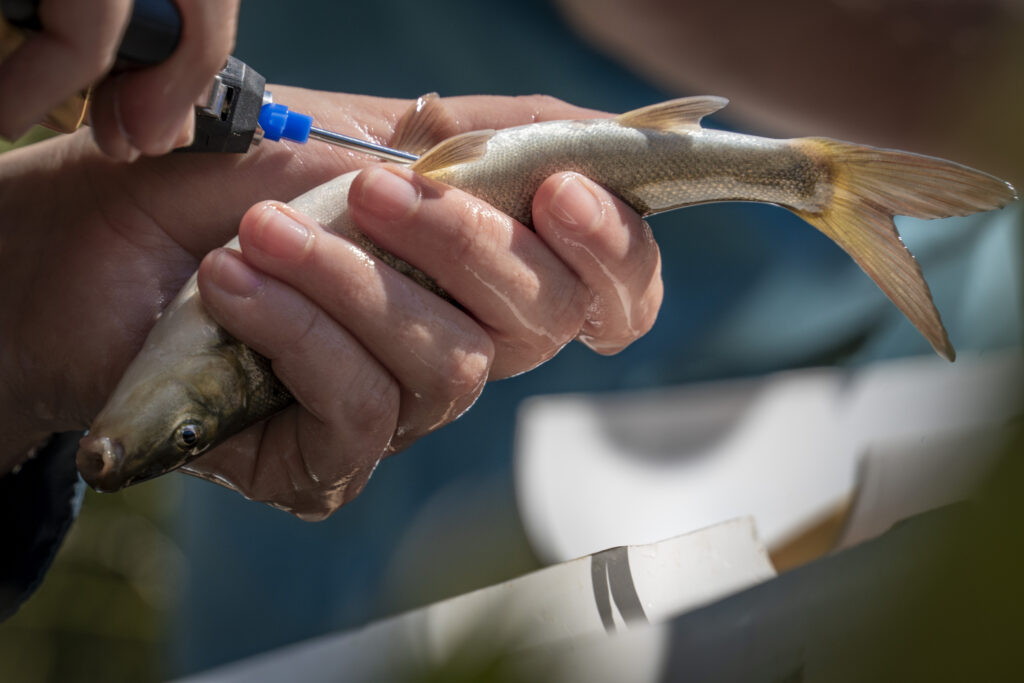
PIT (Passive Integrated Transponder) tagging of Clanwilliam sandfish (© Jeremy Shelton)
How do you engage with local communities to raise awareness about freshwater issues and involve them in conservation efforts?
[Jeremy] Unemployment is very high in South Africa, so we train up and employ local community members to rescue sandfish, restore river ecosystems, and collect scientific data while doing so. We work with farmers to create sanctuaries for threatened freshwater fish in their farm dams, we create native fish rewilding experiences for guests visiting the area and we involve school groups in our annual sandfish rescue efforts. We also communicate this work to a wider audience through film and photography.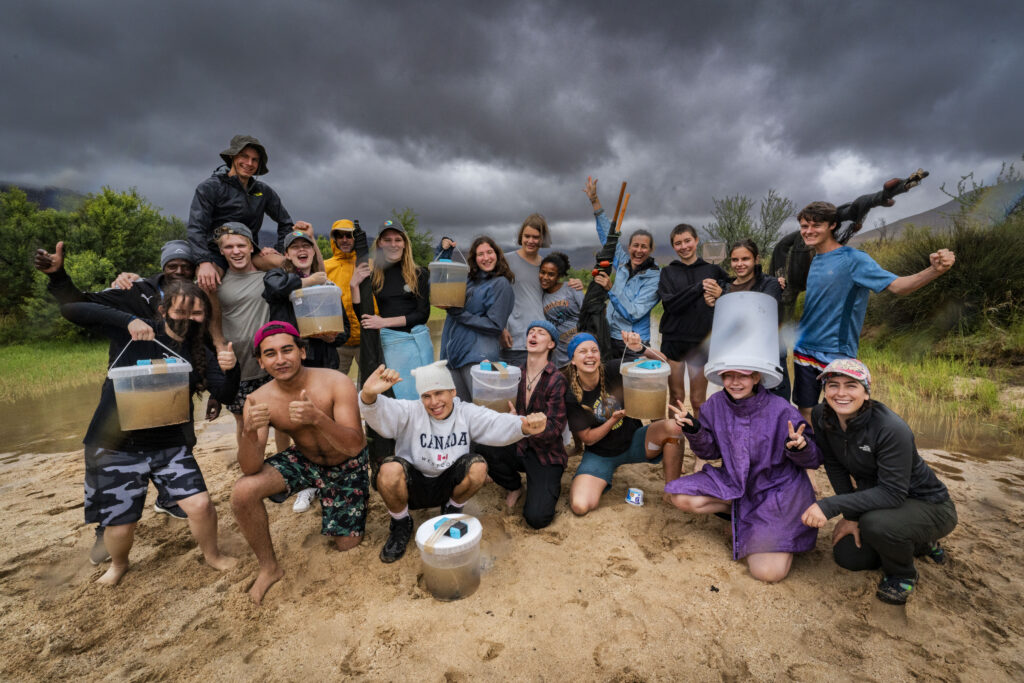
Students from Ceder House School getting involved in the 2022 Sandfish rescue (© Jeremy Shelton)
You have been a WFMD event organiser for several editions, what are your plans for WFMD 2024?
[Jeremy] This year, we are working with a South African artist to create a shoal of large wraith-like sandfish ‘puppets’, representing this endangered migratory fish species at a large local festival called AfrikaBurn, located within the Doring River watershed. The puppets will migrate across the festival every sunset for a week in an effort to raise awareness about migratory fish and support river restoration efforts in South Africa.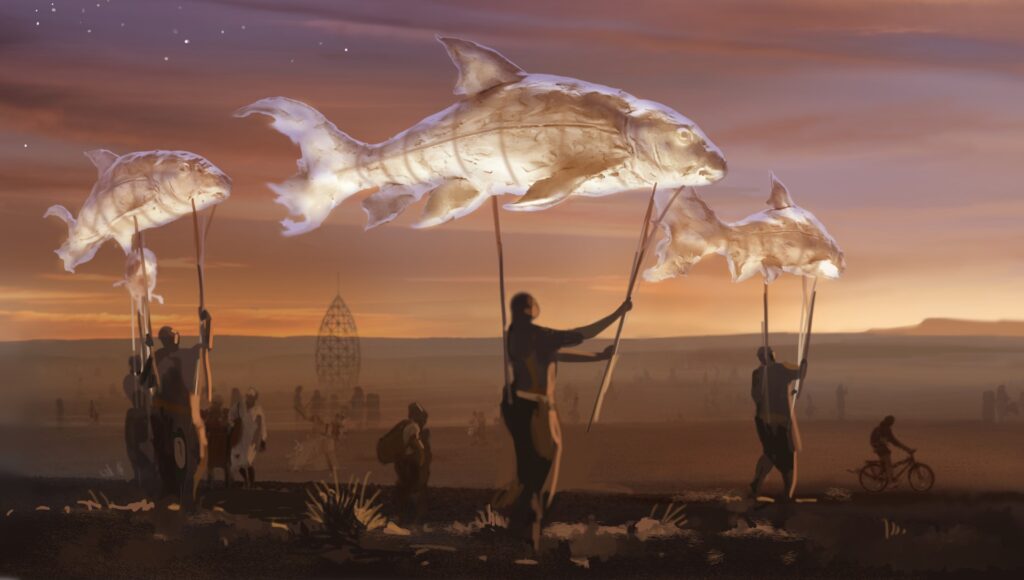
Artist Chip Snaddons impression of the Sandfish puppets being created for WFMD 2024 (© Chip Snaddon)
The Saving Sandfish project is funded by the National Geographic Society, Fondation Segré through IUCN Save Our Species, The Mohamed Bin Zayed Species Conservation Fund, the Federation of Southern African Flyfishers (FOSAF), the Rufford Foundation, Mount Ceder, Bushmans Kloof and the Ford Wildlife Foundation. Youth 4 Conservation, CapeNature, Fynbos Fish Trust and Northern Cape Department of Environment and Nature Conservation are partners on the project.
Read more Free Flow Champions and find inspiration for your World Fish Migration Day 2024 event.


